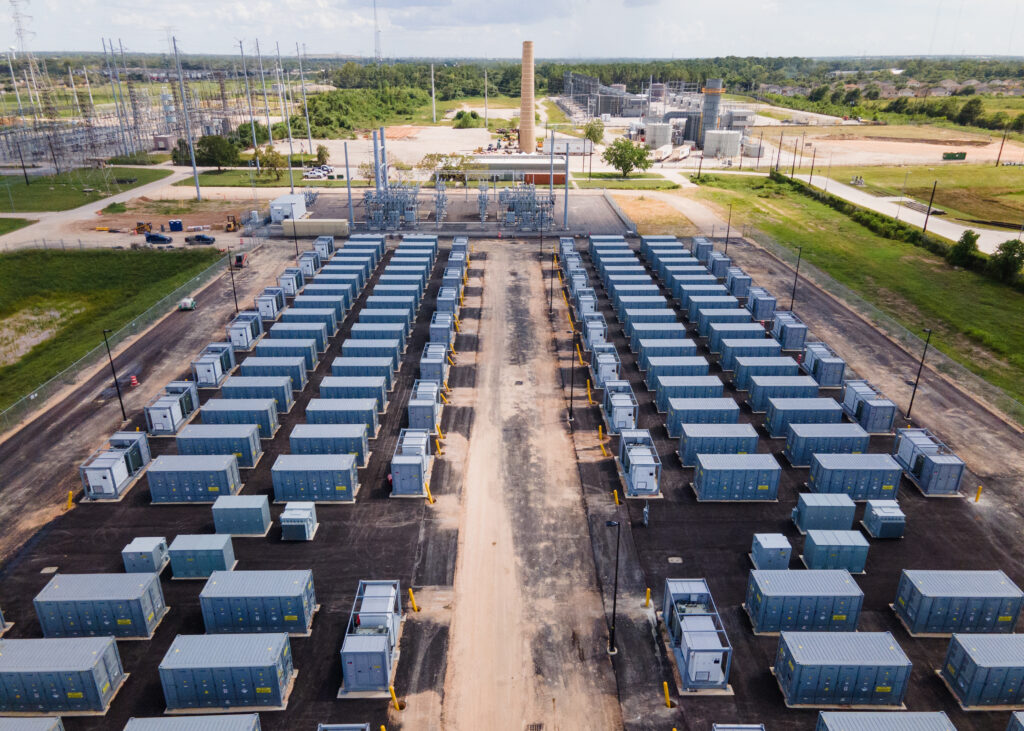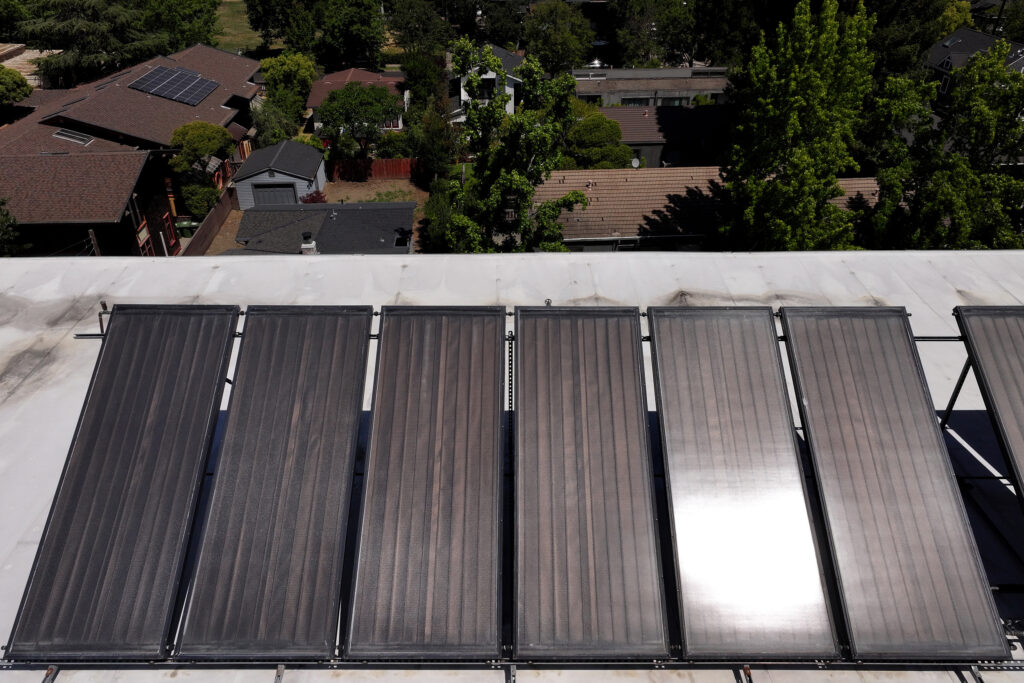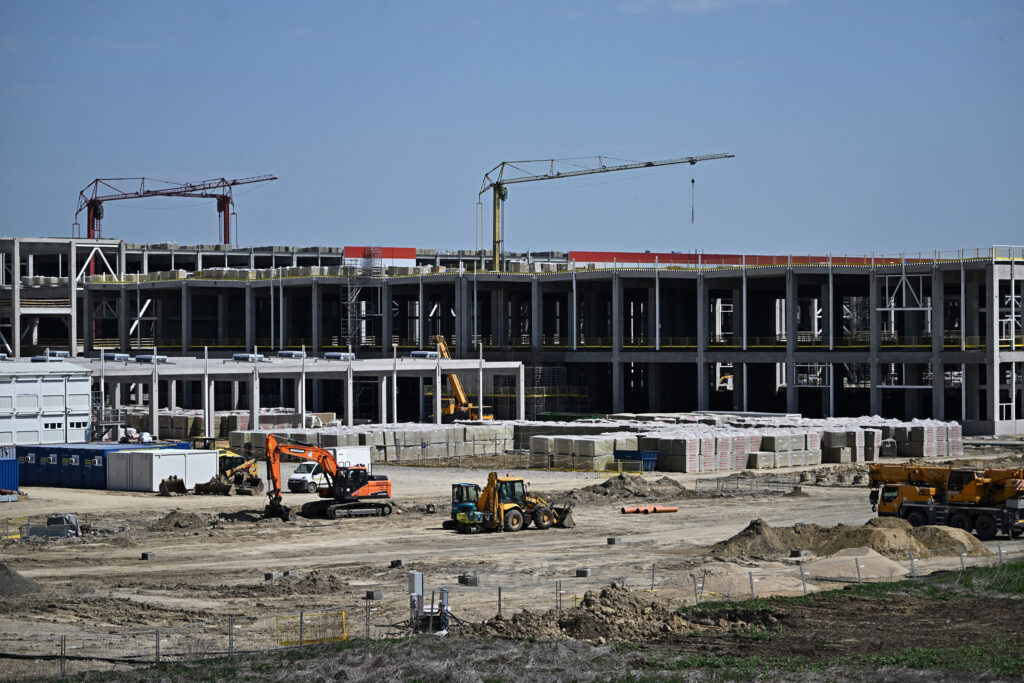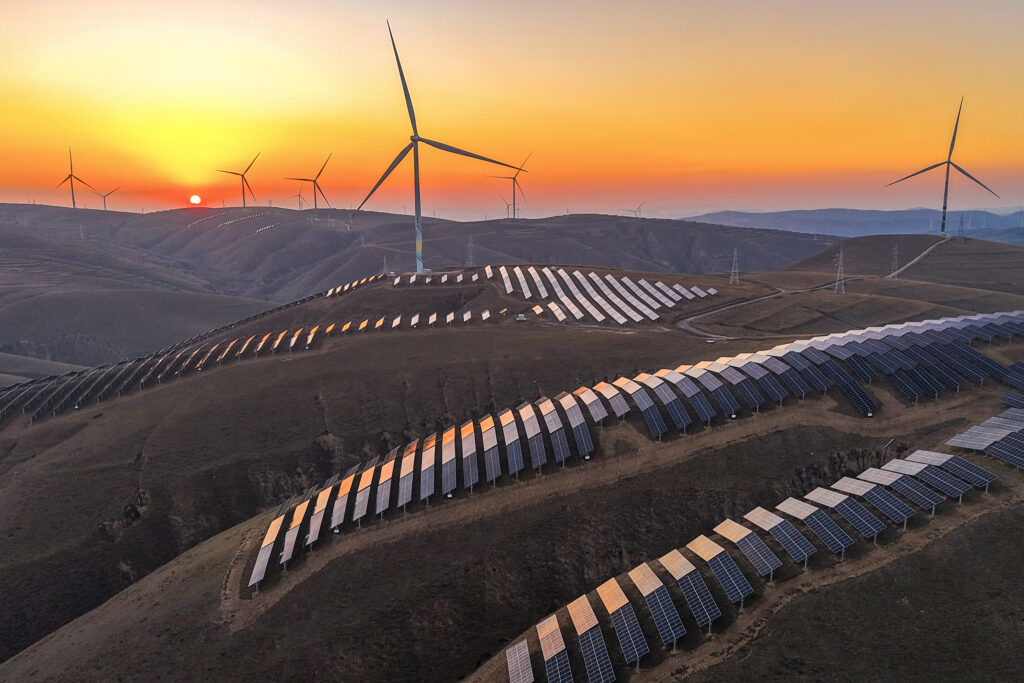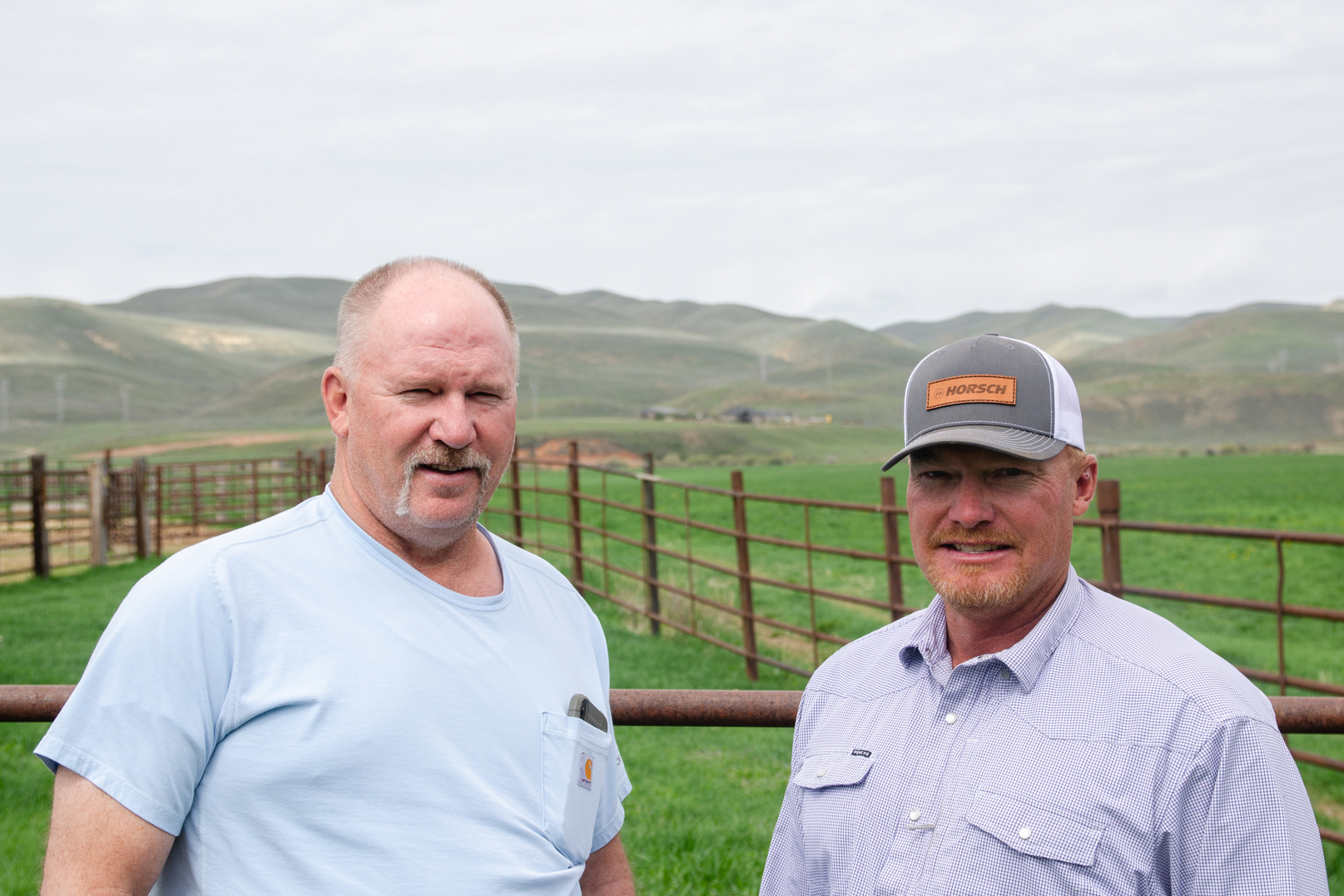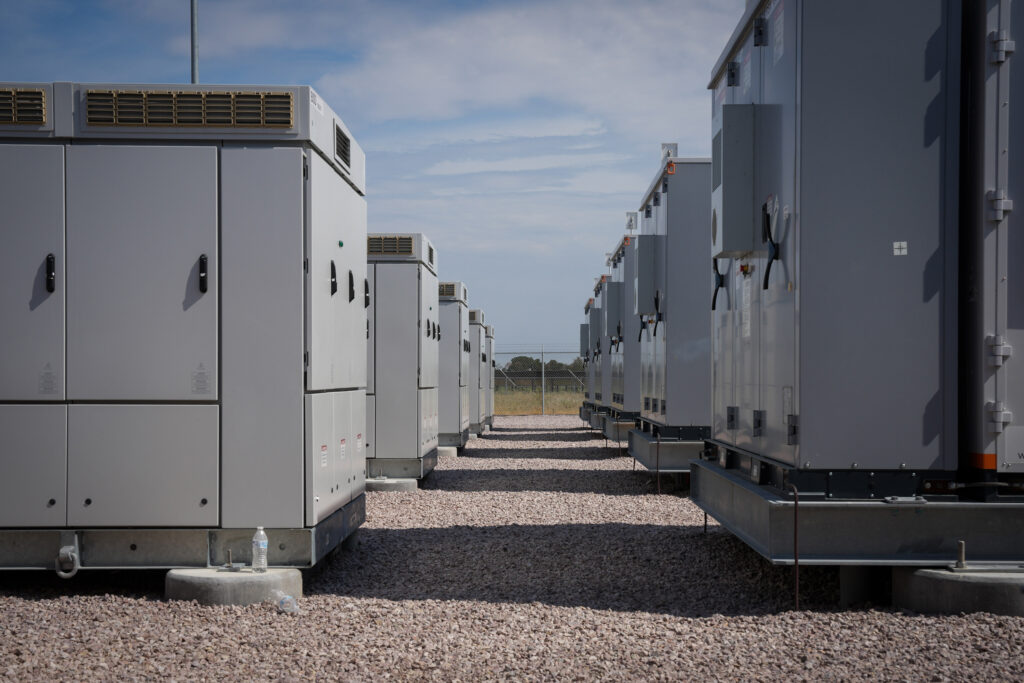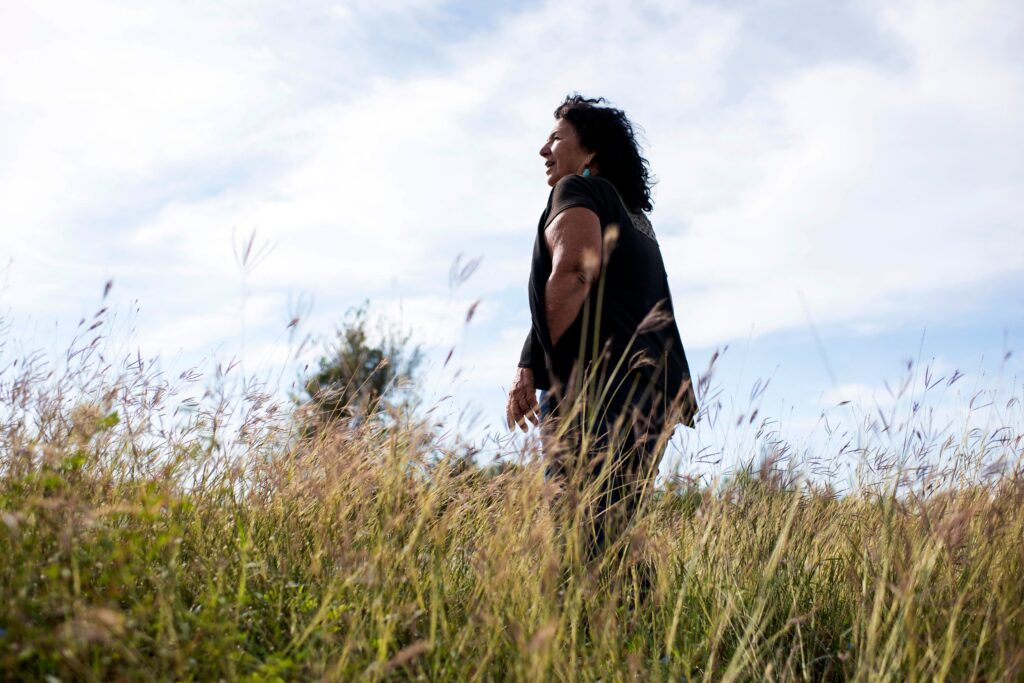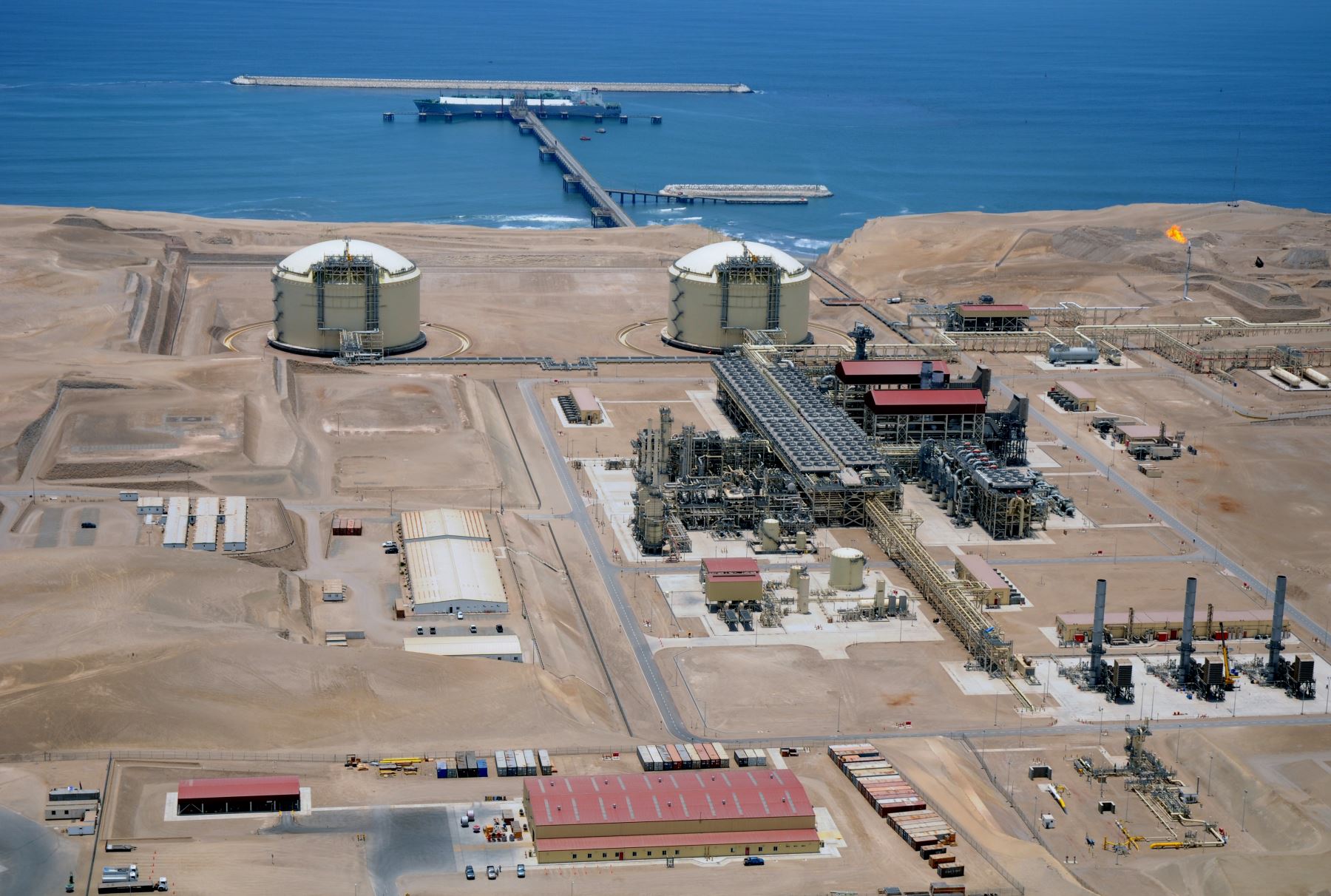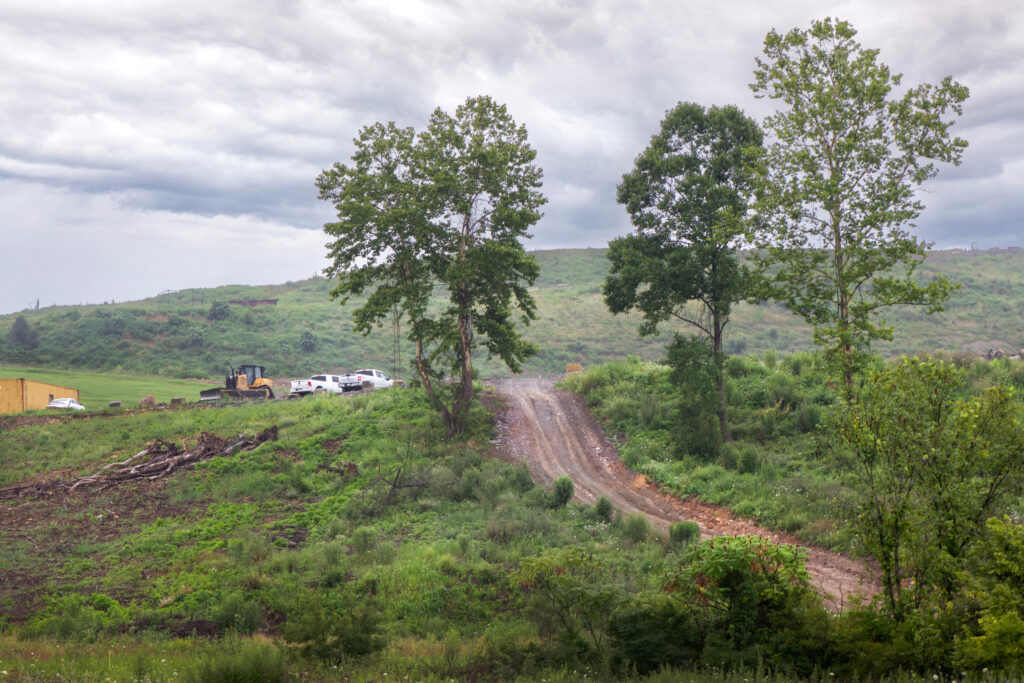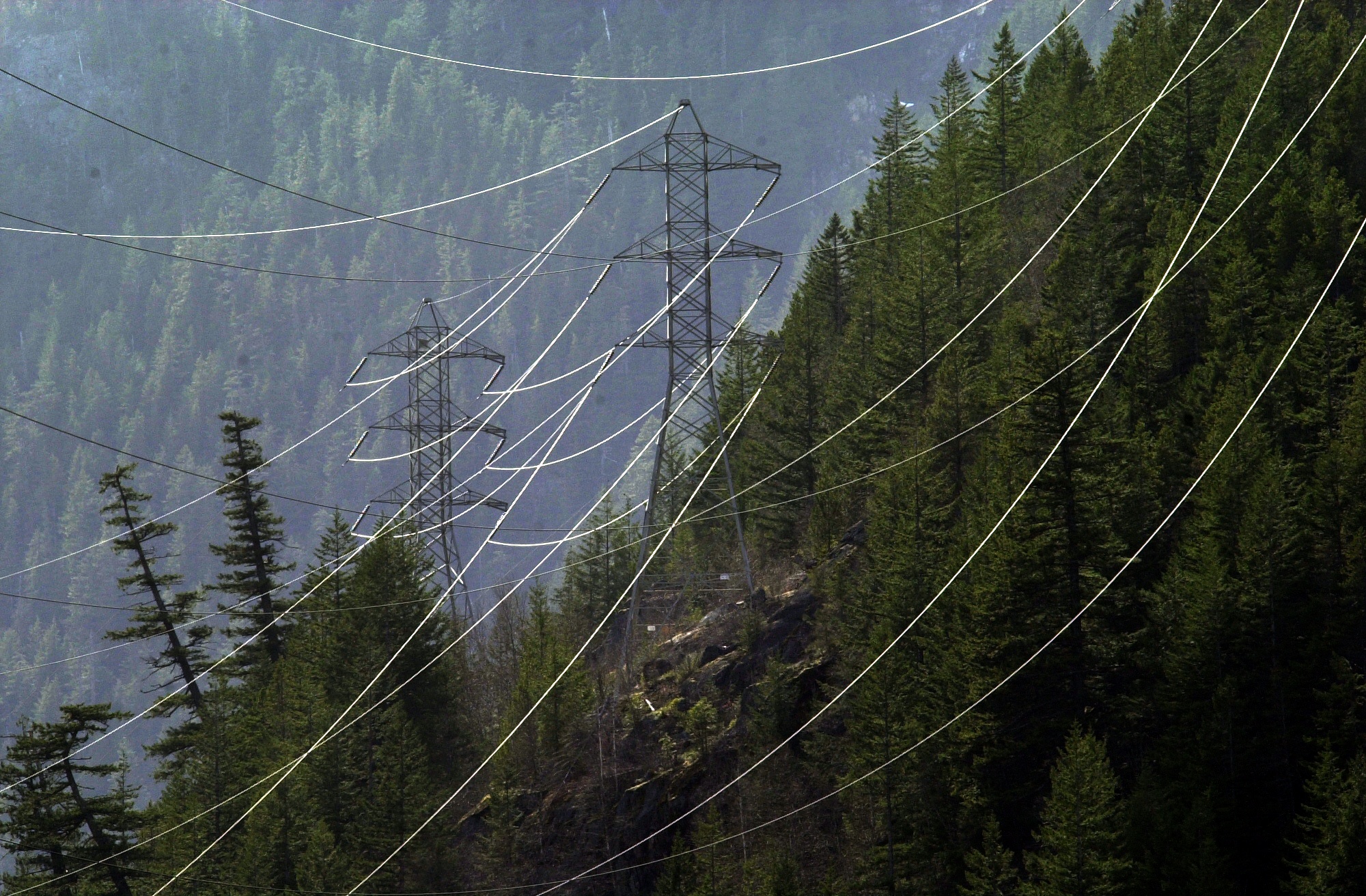LANCASTER, Ky.—It is unusual to have a utility-scale solar array in Kentucky, and even more unusual that the grounds crew here is a live-in flock of more than a thousand sheep.
On a recent afternoon, the sheep lounged beneath the shade created by solar panels, supervised by three dogs: Honey, Junior and Roxy.
The property is a farm and a power plant, and the developer, Silicon Ranch, is using this site to test how to maximize the income from both businesses. The work is part of an effort by solar companies and farmers searching for ways to efficiently utilize the hundreds of millions of acres in the United States used for livestock grazing.
Nick de Vries, Silicon Ranch’s chief technology officer, walked along a row of panels, explaining that his company and others have largely figured out how to integrate sheep farming and solar. The next step is to replicate the process with cattle, he said.
Silicon Ranch developed a system to work with cattle. The company provided details on the system, called CattleTracker, ahead of a public announcement coming at a later date.
The combination of solar and cattle could transform the renewable energy landscape, opening up vast stretches of land for solar development, contributing to a transition away from climate-warming fossil fuels.
It also would address concerns about solar encroaching on food production and agribusiness, de Vries said. That’s an important factor in Kentucky, which ranks in the bottom 10 in the country in utility-scale solar installed capacity.
Silicon Ranch’s system shows progress on cattle and solar that would help the industry move from a few small pilot projects to the potential for commercial scale.
Inside Climate News visited this farm to discuss CattleTracker and check on the progress of agrivoltaics—the integration of solar and agriculture—at a time when the Trump administration is eliminating renewable energy subsidies and cutting budgets for research grants.
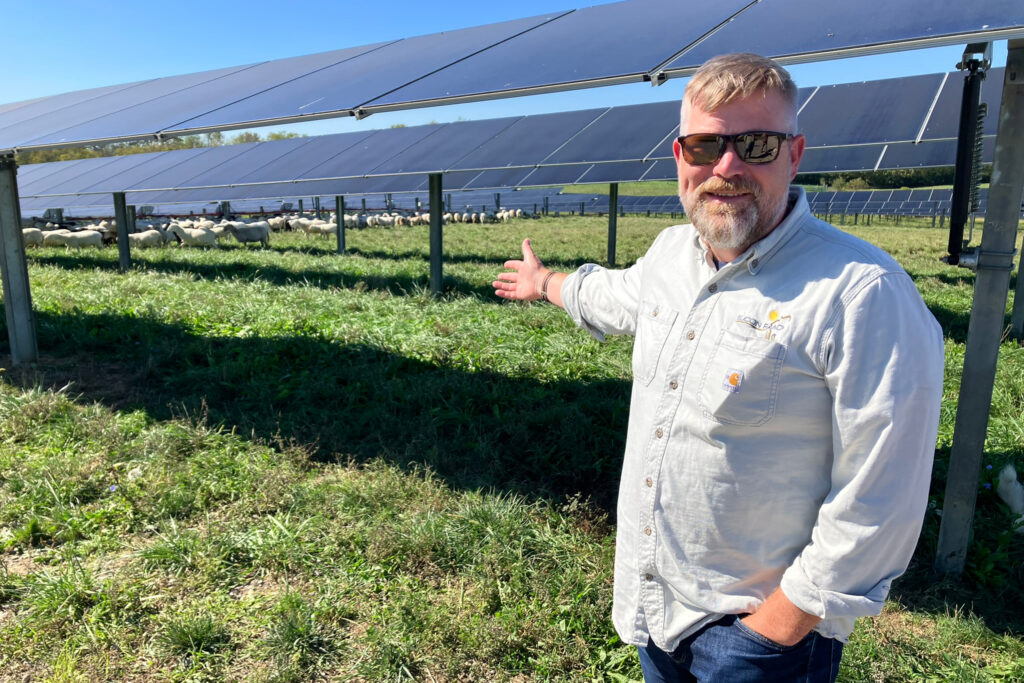
Developing solar with cattle presents a major opportunity to expand solar energy, given the vast size of the U.S. beef industry, but it also poses some significant challenges.
“They’re very large animals,” de Vries said. “They scrape on things. They like to rub.”
He has become an authority within the industry on mixing livestock and solar, which is often called solar grazing, and its practitioners have a trade group, the American Solar Grazing Association.
He views the challenges with cattle as surmountable. He stepped to a nearby row of panels and pointed out which parts can withstand contact with a cow, and which are vulnerable.
The main idea behind CattleTracker is that panels are vulnerable when turned at close to vertical angles because they are then low enough for cows to bump into them. The solution is to adjust the tracker system—the machines that tilt the panels throughout the day to capture the sun—so that the panels stay at close to a horizontal angle when cows are present.
On a typical ranch, workers move the herd to a different part of a property every few days so the animals can have fresh grass and avoid manure pileup. Solar panels can operate with normal tracking most of the time when cows are away, and with limited tracking when cows are present. The system has controls to set the mode.
Silicon Ranch initially plans to use CattleTracker at some solar projects that it owns and operates, starting this year with a project in Christiana, Tennessee, about 40 miles south of the company’s Nashville headquarters. The privately held company, founded in 2011, has about 150 projects, most of which are spread across the Southeast United States.
An inevitable part of the conversation is that animal agriculture and Americans’ meat-heavy diets are major contributors to climate change. Solar grazing is an attempt to marry a climate solution to a climate problem, with the expectation that the result is a net positive.
People doing the work to expand solar grazing say they are driven by environmental and economic imperatives.
Silicon Ranch’s work on CattleTracker includes determining how to manage biodiversity and increase the land’s capacity to store carbon.
“I don’t think that grass-fed, rotationally grazed livestock [is a] a climate disaster,” de Vries said.
He drew a contrast between concentrated animal feeding operations, which are bad for the environment and bad for animal health, and the kinds of projects his company is pursuing.
Peer-reviewed research has not provided clear answers about the climate ramifications of solar grazing, partly because this kind of development is so new. A paper published in February in the journal Small Ruminant Research found that “knowledge gaps persist” in assessing the benefits and downsides of combining solar and sheep.
The History and Future of Solar Grazing
Solar grazing started with sheep, with some of the earliest U.S. examples coming online in the early 2010s.
It’s a natural fit. Sheep are small enough that they’re unlikely to come into contact with panels. The panels provide shade and the animals eat grass, reducing the need for mowing.
“I just can’t even stress how awesome this opportunity is,” said Daniel Bell, the farmer whose sheep live at the Silicon Ranch solar array in Lancaster.
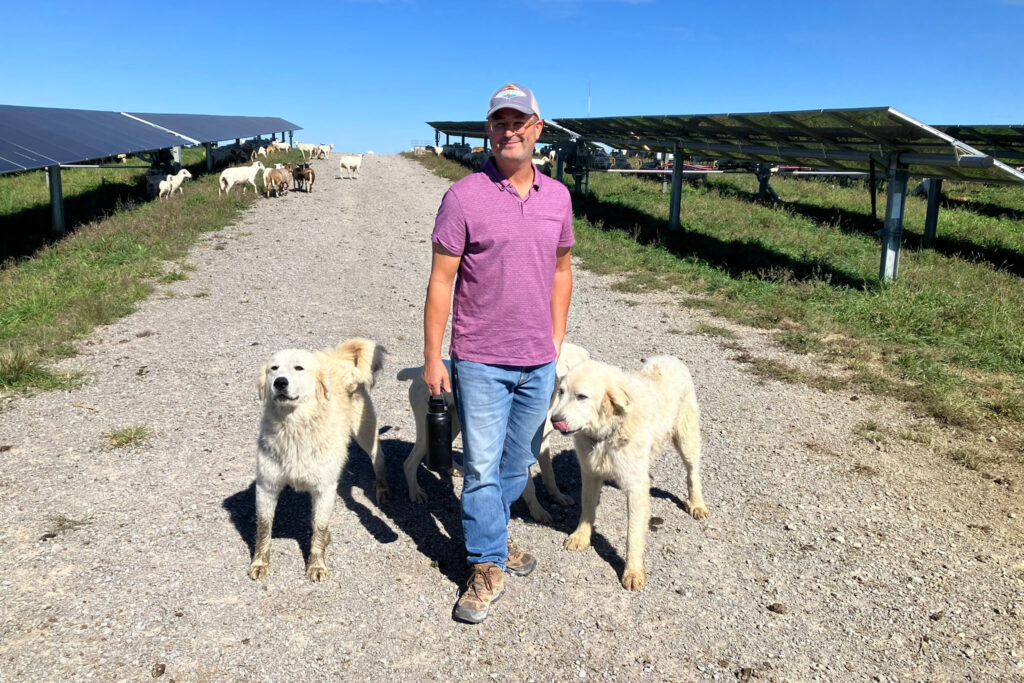

The solar project, Turkey Creek Solar Ranch, went online in 2022 on a 750-acre property. It has a generating capacity of 70 megawatts.
Bell raises Katahdin sheep, a breed of “hair sheep” that have short hair instead of wool and are raised for their meat.
He has a smaller farm nearby with some sheep but there isn’t enough space for a larger flock. He connected with Silicon Ranch, which allowed him to use the space around the solar panels for grazing and awarded him a contract to maintain the property’s grass. The sheep do most of the work keeping the grass trimmed; Bell and his son mow about once per year.
Of 617 agrivoltaic projects in the United States, more than half focus on growing crops next to solar, according to a database maintained by the National Renewable Energy Laboratory. Of the 248 projects with livestock, 237 have sheep, eight have cattle and there is one each for horses, goats and a mix of llamas and alpacas.
This story is funded by readers like you.
Our nonprofit newsroom provides award-winning climate coverage free of charge and advertising. We rely on donations from readers like you to keep going. Please donate now to support our work.
Donate Now
The American Solar Grazing Association published a census this year that shows Texas has more than half of the country’s acreage for sheep grazing and solar, which isn’t surprising since the state is the leader in sheep farming and is in a virtual tie with California for the lead in utility-scale solar. The census lists 506 solar grazing projects nationwide, more than double the number in the NREL database, which indicates differences in how each report defines a project and how it gathers its data.
Whatever the number of solar grazing sites, it is clear that the sheep industry is small compared to the cattle industry, underscoring the growth potential if solar grazing becomes more popular with cattle farmers. Last year, meat producers slaughtered 138.9 million pounds of sheep, down 9 percent from five years earlier, according to the government’s National Agricultural Statistics Service. The total for beef was 27 billion pounds, which was essentially flat compared to five years ago.
Another reason solar companies are looking to expand into cattle is that the renewable energy industry may already have fulfilled much of its growth potential with sheep farming.
“We’ve hit a bit of a saturation point temporarily with sheep grazing,” said Joe Lawrence, a dairy forage systems specialist at Cornell University’s College of Agriculture and Life Sciences, about the projects he’s observed in New York. “I think there are future opportunities, but I feel like the low-hanging fruit, so to speak, was there four or five years ago.”
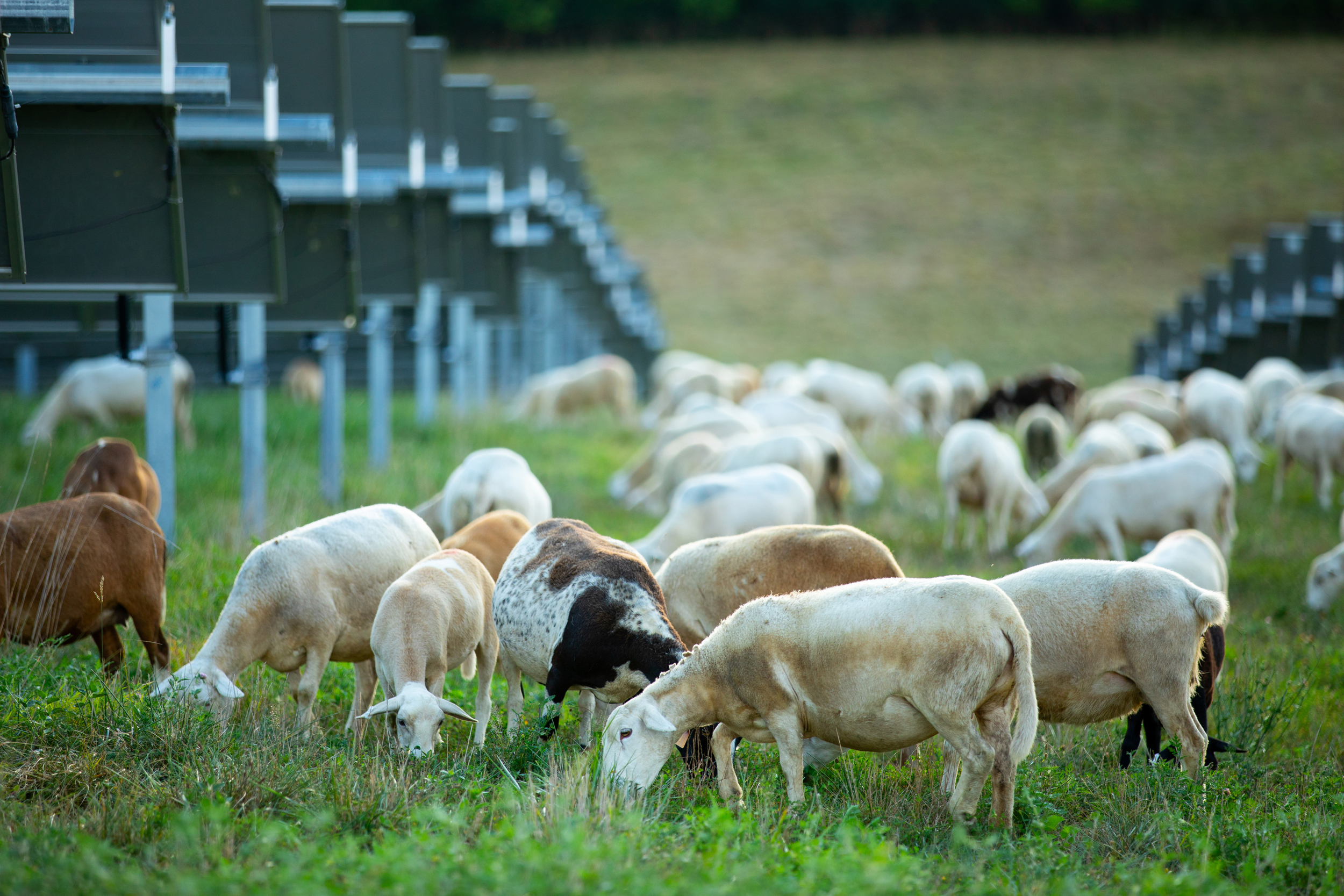

He works primarily with dairy cows and sees solar grazing with cows as a promising opportunity to expand agrivoltaics. The main challenge is protecting the equipment from the animals.
“Depending on if it’s a dairy or beef cow, it could weigh 1,500 or 2,000 pounds,” he said. “You could certainly see a scenario where they, especially younger animals, would bump into something inadvertently.”
The current examples of solar grazing with cows are all small, designed mostly for research. BlueWave Solar of Massachusetts has three projects in that state, none of which is larger than 20 acres, which is small for utility-scale solar.
One of the three, Grafton Solar, is a partnership with the energy company AES and includes crops, livestock and solar. AES is a large utility and solar developer with projects across the country, so its work with solar and cattle could signal a larger trend among major players in the industry.
Other projects with solar and cows include university-managed test farms near the campuses of the University of Minnesota Morris and Rutgers University in New Jersey.
One common approach is to mount panels high off the ground so there is little chance of contact with cows. But this has downsides in terms of cost, as the developer needs to spend much more on the pylons that support the solar racking.
Silicon Ranch has found that it makes more sense financially to put the panels closer to the ground and use trackers to avoid contact with cows. This is part of a larger company-wide process to examine the totality of a cattle-grazing operation and determine how it can work alongside solar.
In at least one way, the timing of Cattletracker’s rollout is not ideal. It’s the kind of system that may have received substantial interest from federal government agencies in the Biden administration.
But the Trump administration is phasing out and cancelling many of the programs and grants that helped to subsidize renewable energy, including initiatives at the Department of Energy and Department of Agriculture.
Silicon Ranch has benefitted from help in the form of government-funded research at universities and national labs to better understand the effects of solar grazing on soil and other environmental and animal health factors.
But de Vries downplayed the harm of having less government support.
“I don’t think that there should be agrivoltaic subsidies,” he said. “You should strive for a good business solution, and then find what’s going to make it replicable, not limited to grants.”
de Vries and his company are confident that the combination of cows and solar will be good for business—and will soon learn if they’re right.
About This Story
Perhaps you noticed: This story, like all the news we publish, is free to read. That’s because Inside Climate News is a 501c3 nonprofit organization. We do not charge a subscription fee, lock our news behind a paywall, or clutter our website with ads. We make our news on climate and the environment freely available to you and anyone who wants it.
That’s not all. We also share our news for free with scores of other media organizations around the country. Many of them can’t afford to do environmental journalism of their own. We’ve built bureaus from coast to coast to report local stories, collaborate with local newsrooms and co-publish articles so that this vital work is shared as widely as possible.
Two of us launched ICN in 2007. Six years later we earned a Pulitzer Prize for National Reporting, and now we run the oldest and largest dedicated climate newsroom in the nation. We tell the story in all its complexity. We hold polluters accountable. We expose environmental injustice. We debunk misinformation. We scrutinize solutions and inspire action.
Donations from readers like you fund every aspect of what we do. If you don’t already, will you support our ongoing work, our reporting on the biggest crisis facing our planet, and help us reach even more readers in more places?
Please take a moment to make a tax-deductible donation. Every one of them makes a difference.
Thank you,




